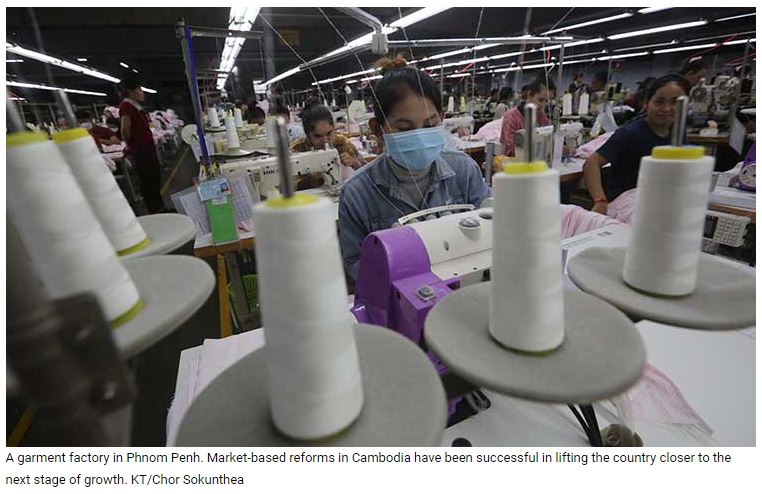RCEP can help Cambodia’s exports to grow upto 18%
Structural changes to be brought by Regional Comprehensive Economic Partnership (RCEP) can raise Cambodia’s exports between 9.4 percent and 18 percent annually, according to experts.
A discussion paper in the Comprehensive Asia Development Plan (CADP) 3.0, released recently by Jakarta-based Economic Research Institute for Asean and East Asia (ERIA) said that the large export potential for Cambodia is in implementing the RCEP commitments and undertaking deeper structural reforms to align the domestic economy with regional integration.
According to the study, RCEP’s impact of a 9.4 percent increase in exports could have an annual growth impact of two percent on GDP and 3.2 percent increase in employment. The higher impact of an 18 percent increase in exports on the domestic economy can translate into a 3.8 percent increase in GDP and a 6.2 percent increase in employment.
The study said the progressive market-based reforms in Cambodia in both manufacturing and services have been successful in lifting the country closer to the next stage of growth. Cambodia has to maintain progressive market-based reforms in the post-pandemic recovery for deeper regional integration with the framework provided by RCEP, it suggested.
One of the authors of the paper, Shandre M Thangavelu of the Jeffrey Cheah Institute on Southeast Asia, Sunway University, Malaysia, told Khmer Times that the structural transformation of the Cambodian economy is critical to shift and position its manufacturing activities to higher value-added activities in the global production value-chain (GVC).
“Currently, the manufacturing sector is not diversified and concentrated in garment and textiles, but the overall manufacturing activities are showing signs of shifting to higher value-added activities such as parts and components and transport,” he said.
“There is a need to accelerate the structural transformation in terms of diversifying the garment and textiles manufacturing to higher value-added GVC activities and also to invest in key fundamentals that will accelerate the structural transformation such as human capital development, infrastructure (soft and hard), technology, connectivity and forward-looking institutions to facilitate trade and investment,” he said.
According to Thangavelu, this expansion of trade reflects the ‘catching-up’ and ‘leap-frogging’ phase for Cambodia in terms of investment in key human capital and skills and the alignment of key industries in the GVC.
“It is also important to maintain and sustain the structural transformation in terms of increasing the competitiveness of the labour-intensive activities,” he said.
Thangavelu also listed several policy options – shifting the labour-intensive activities from Phnom Penh to other competitive regions in Cambodia that can absorb such industries. “This trickle-down effect of industries to other provinces will increase the competitiveness of each province based on their respective comparative advantages,” he said.
“Phnom Penh should be a competitive global city driving globalization and shifting to higher value-added activities in services, digitalization, technology and innovation. The connectivity, city linkages and urban agglomeration between cities and provinces in line with regional GVC activities will increase the overall potential of the Cambodian economy,” he noted.
The study found that Cambodia’s export potential is much higher than the actual value, and it could have been exporting $4.27 billion extra to the RCEP countries annually. China, Korea, and Japan offer a larger opportunity for Cambodia’s exports, with export potential amounting to $2.74 billion.
There is also a need to increase the competitiveness and linkages of Special Economic Zones (SEZs) to GVC activities to attract multinational activities in these industries. Recent evidence indicates that SEZs in Cambodia are losing their attractiveness in higher value-added activities to create linkages to regional GVCs.
The study found that Cambodia’s exports to China, Japan and Korea are in consumer final products, which are labour-intensive in terms of ‘cut, make, and trim’ in clothing exports. It is important to develop more functional services activities in garments exports in services; such as branding, marketing, and sourcing, that will allow the textile and garment industry in Cambodia to move up the value chain, it said.
Source: https://www.khmertimeskh.com/501184698/rcep-can-help-cambodias-exports-to-grow-upto-18/


 Thailand
Thailand




